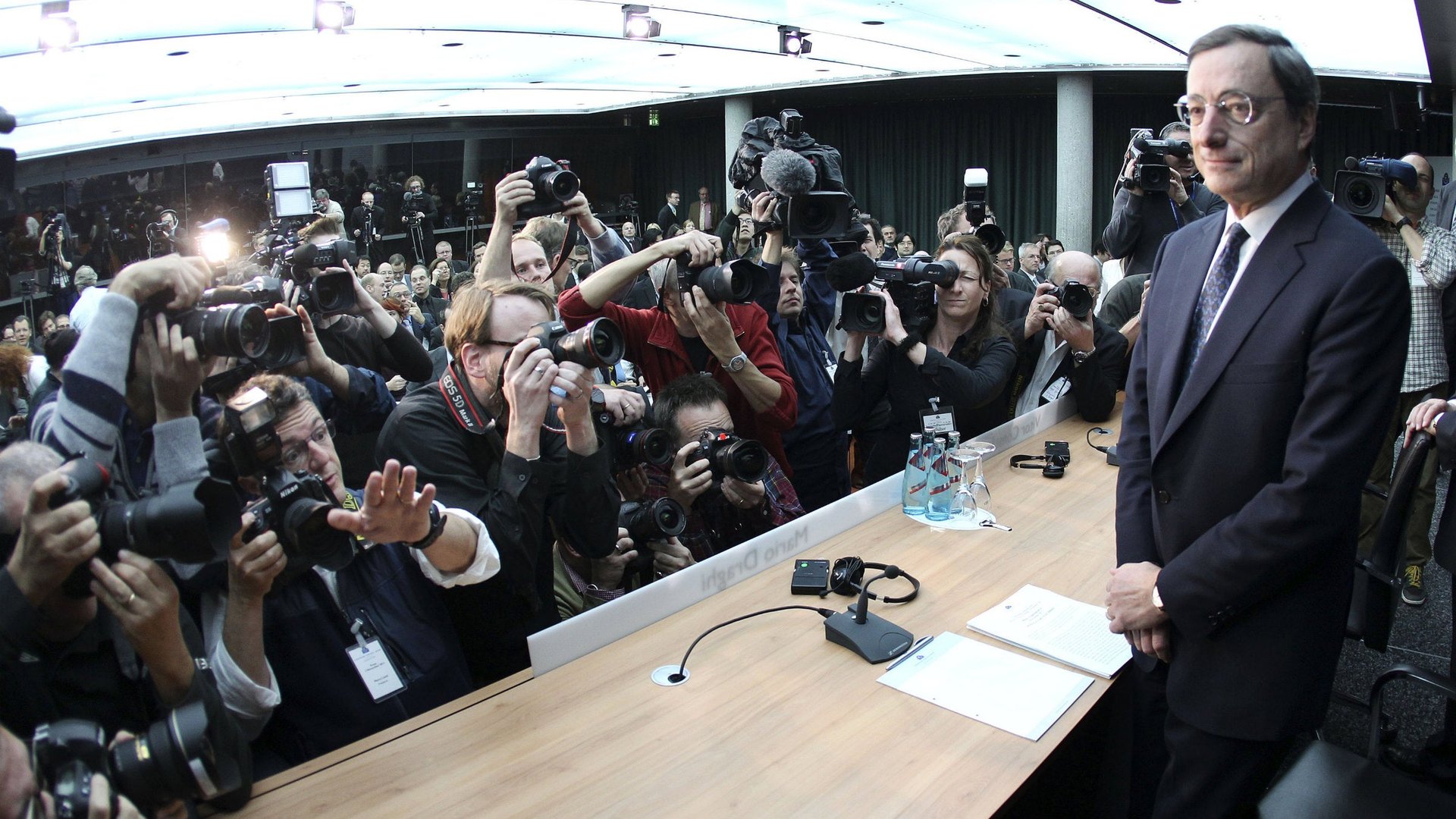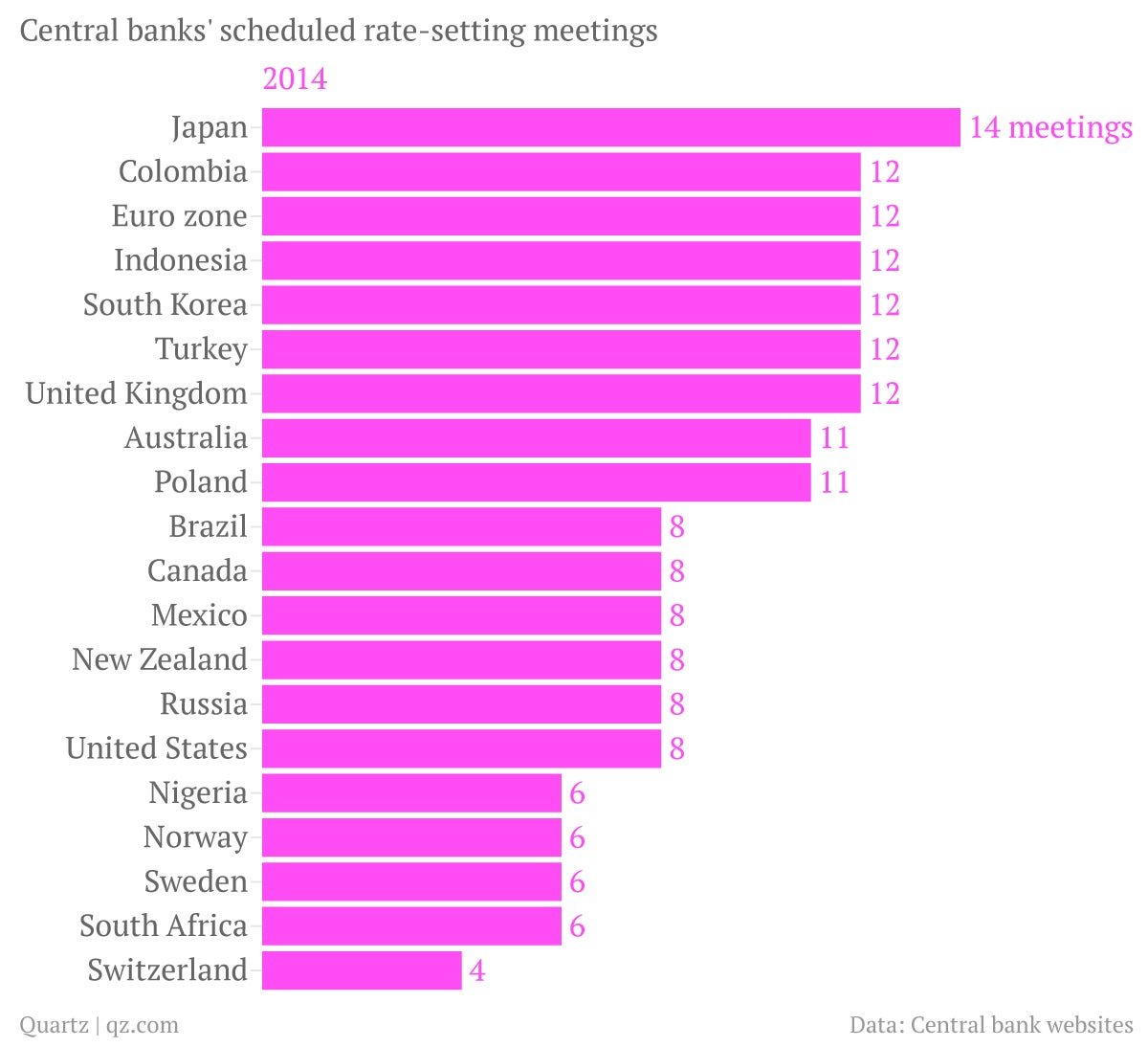Mario Draghi’s idea of richer ECB communication is to hold fewer press conferences
Nobody moves markets like Mario Draghi. Traders hang on every word from the president of the European Central Bank, in part because the ECB is one of the more opaque central banks when it comes to explaining its rate-setting decisions.


Nobody moves markets like Mario Draghi. Traders hang on every word from the president of the European Central Bank, in part because the ECB is one of the more opaque central banks when it comes to explaining its rate-setting decisions.
Under its current rules, the minutes from the bank’s monthly meetings are released with a 30-year delay. Most other central banks publish minutes a few weeks after announcing changes to rates, giving investors a feel for the policymaking process. By contrast, the market’s understanding of the mood of ECB council members depends on how talkative Draghi happens to be with the Frankfurt press corps.
These rules changed today, with the ECB pledging to publish “accounts” of monetary policy meetings starting next year. This has been mooted before, but delayed by fears of stoking cross-border tensions: If the votes of individual board members are revealed, it could bring extra pressure on them to be seen standing up for national interests, the thinking goes. Draghi said today that the ECB will conduct “dry runs” with the new communication policy before deciding on the final format.
But what one hand giveth, the other taketh away. Draghi also announced today that the ECB will hold fewer meetings starting next year, moving from a monthly schedule to one that meets every six weeks. Monthly meetings make the markets expect constant action, Draghi said, and monetary policy is better conducted with long-term goals in mind. The new schedule will bring the ECB in line with the Federal Reserve in terms of meeting frequency, and puts it in the middle of the pack as far as big central banks go:

So if we see less of Draghi in the future, but get a much richer record of how the ECB’s decisions are made, then the new policy will be a net positive. The jury is out whether this will be the case.
The risk, as always in the euro zone, is that there are so many interested parties that the only statements acceptable to all will be depressingly anodyne. As Tom Rogers of consultancy EY puts it:
The intention to publish minutes of ECB meetings is welcome, but the accompanying decision to shift to six-weekly meetings looks at least partly motivated by a desire to heavily edit these accounts of policy discussions. This would be a shame since the purpose of publishing minutes is for markets to understand ECB thinking, not simply to have another record of what is already known. We are also unconvinced the Eurozone is yet in such rude health that a monthly meeting is overly frequent.